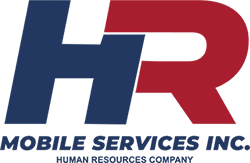OSHA issued new guidelines focusing on the ongoing COVID-19 pandemic in January, which aim to directly inform employers on the risks of being exposed to COVID-19 in the workplace. COVID-19 is not a new problem for workplaces, and employers have already implemented many of these guidelines throughout the pandemic. With this in mind, these guidelines look to provide further depth on what should be done to create the appropriate control measures to best provide for employers and employees alike.
These include direct definitions of COVID-19, face coverings, and physical distance (also known as social distancing). They also define the appropriate amount of time for employees to isolate, as per the CDC guidelines, as well as approaches on how to minimize the negative effects of COVID-19 cases identified in the workplace. There are also suggestions on increasing ventilation in buildings and using personal protective equipment (or PPE) in workspaces.
The 16 specific elements that they suggest all COVID-19 plans should include are as follows:
- Assignment of a workplace coordinator
- Identification of where and how workers might be exposed to COVID-19 at work
- Identification of a combination of measure that will limit the spread of COVID-19 in the workplace, in line with the principles of the hierarchy of controls
- Consideration of protections for workers at higher risk for severe illness through supportive policies and practices
- Establishment of a system for communicating effectively with workers and in a language they understand
- Educate and train workers on your COVID-19 policies and procedures using accessible formats, and in a language they understand
- Instruct workers who are infected or potentially infected to stay home and isolate or quarantine
- Minimize the negative impact of quarantine and isolation on workers
- Isolating workers who show symptoms at work
- Performing enhanced cleaning and disinfection after people with suspected or confirmed COVID-19 have been in the facility
- Providing guidance on screening and testing
- Recording and reporting COVID-19 infections and deaths
- Implementing protections from retaliation and setting up an anonymous process for workers to voice concerns about COVID-19 related hazards
- Making a COVID-19 vaccine or vaccination series available at no cost to all eligible employees
- Not distinguishing between workers who are vaccinated and those who are not
- All other applicable OSHA standards
President Biden has also asked OSHA to determine whether an emergency standard during the ongoing pandemic is necessary and to implement a standard no later than March 15th, 2021. With that in mind, employers should review their own standards to make sure they’re prepared in the event of any changes from OSHA and continue to monitor local and state guidelines that may require more action.
To best stay prepared during this one in a lifetime event, HR Mobile Services, Inc. provides both a COVID-19 program and a COVID-19 hazard assessment. These documents help inform employers and employees alike and make sure that your worksites are up to code. If you have been a customer with us over the past year, we have already provided this documentation for you, and we have been able to verify that it matches current OSHA standards. For more information, please reach out to us at (877) 734-7677.
“UNITED STATES DEPARTMENT OF LABOR.” Protecting Workers: Guidance on Mitigating and Preventing the Spread of COVID-19 in the Workplace | Occupational Safety and Health Administration, www.osha.gov/coronavirus/safework.


